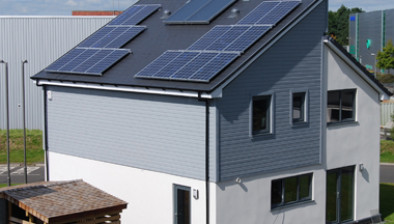Scottish Household Survey shows continued decline in social rented sector
 An annual report into the tenure of Scottish households has renewed calls from across the sector for an “urgent need” for more affordable homes.
An annual report into the tenure of Scottish households has renewed calls from across the sector for an “urgent need” for more affordable homes.
Results from the Scottish Household Survey 2014 found that the social rented sector has declined from 32 per cent of all households in 1999 to 24 per cent in 2014.
Meanwhile the number of households turning to the private sector to rent has nearly tripled from 120,000 (five per cent) in 1999 to 330,000 (13 per cent) last year.
The Scottish Federation of Housing Associations (SFHA) said that these findings highlight the urgent need to build more affordable social housing.
Alan Stokes, SFHA policy lead, said: “It is highly likely that this decline in the social rented sector is as a result of people being driven into the private sector due to the lack of affordable social housing.
“While we are working with our members and the Scottish Government to increase the amount of social housing – and we acknowledge that the government is on track to meet its current target – we still need to be building a significantly higher number of homes than are currently being built. Not only will this reduce the housing waiting lists, and provide homes for some of Scotland’s poorest and most vulnerable people, it will also reduce the Housing Benefit bill as private sector rents are much higher than social rents.
“Investing in housing also has many economic benefits, and good quality housing can improve a person’s health and life chances.”
Shelter Scotland called for reform in the sector to enable it to provide long-term homes and build communities.
Director Graeme Brown said: “The rise in the number of households renting privately comes as little surprise as a chronic shortage of affordable homes continues to drive more and more households into Scotland’s private rented sector – 330,000 households, including around 85,000 families with children.
“On the same day news of record high private rents goes further to show that in the 21st century reform is needed to ensure that the private rented sector it is modern, stable, flexible, predictable and fair for those individuals and families that call it home.
“Too often we hear of people being moved on, evicted or rents increased unreasonably, forcing people into the disruptive cycle of having to move house - every six months in some cases - preventing them from ever being able to put down strong roots and being part of a community.
“We want to see a sector that provides long-term homes, not short-term housing, for the growing number of households that rely on it for a home.”
For the Chartered Institute of Housing in Scotland, the priority should be to build more homes across all tenures.
Director Annie Mauger said: “We recognise the huge efforts the Scottish Government has made to prioritise investment in housing over the lifetime of this Parliament to ensure everyone has access to a secure roof over their heads. Nonetheless, these latest figures confirm that rates of home ownership have declined over the past five years and show a longer term decline in the proportion of Scottish households living in social rented accommodation. This is coupled with a corresponding rise in those in private rented housing. At the same time, 160,000 households across Scotland remain on the waiting list for social housing.
“All of these trends are cause for concern and clear symptoms of an overall shortage in housing supply. To reverse them, the first priority must remain to build more housing across all tenures.”
The SNP welcomed findings from the survey which showing a record number of people rate their neighbourhood as a “fairly” or a “very good place to live”, and 86 per cent of people in Scotland are “fairly” or “very satisfied” with the quality of local health services.
Bob Doris, SNP MSP for Glasgow, said: “The results of the 2014 Household Survey are encouraging and show solid improvements in key areas where the SNP Scottish Government has been working hard to deliver improvement.
“People should be able to feel safe and happy in their neighbourhoods - so it is very encouraging that a record 94.4 per cent of people see their neighbourhood as either a ‘very’ or ‘fairly good place to live’.”








